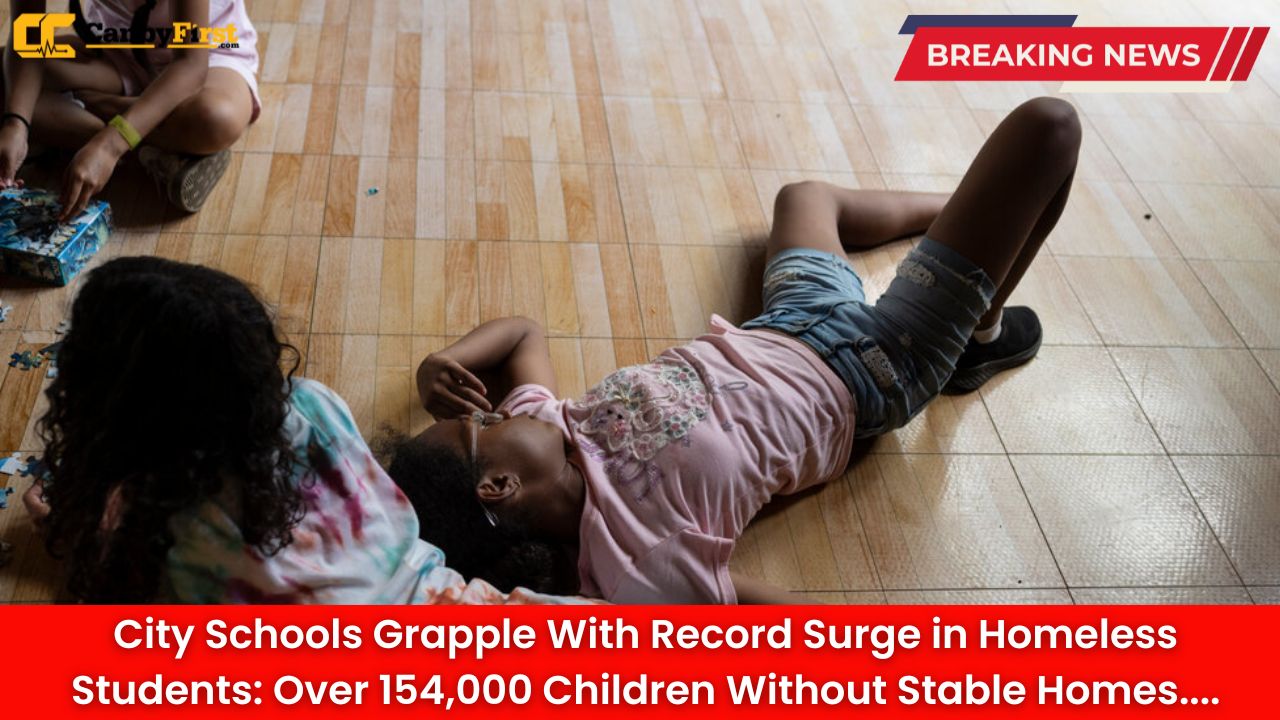New York City is facing an alarming humanitarian and educational crisis after new data revealed that more than 154,000 students in the city’s public school system are currently homeless — the highest number ever recorded. This marks a stunning increase from last year’s already high figure and underscores deepening struggles with housing instability across the five boroughs.
Advocates and educators warn that the record surge threatens both children’s well-being and their academic futures, as the lack of stable housing disrupts learning and emotional development.
Families on the Brink
According to city officials, the majority of these students live in temporary shelters, doubled-up housing arrangements with relatives or friends, or even in cars and parks. The city’s housing shortage, rising food and rent costs, and the end of pandemic-era assistance programs have all combined to push thousands of families into homelessness.
Also Read
“Children without a stable home are at an enormous disadvantage,” said a Bronx-based school counselor. “They’re dealing with trauma, constant movement, and often lack access to quiet or safe spaces to study. It’s impossible for them to focus when survival comes first.”
The Challenge for Schools
Educators across the city are struggling to bridge the gap between compassion and capacity. Many schools are deploying social workers, counselors, and community liaisons to support displaced families, but resources remain stretched thin. Teachers have become frontline responders to a housing crisis manifesting within classrooms.
In Bronx District 9, nearly one in three students faces housing instability — a figure that would have been unthinkable a decade ago. Educators there describe mornings where children arrive hungry, without proper uniforms, or having slept on friends’ couches the night before.
“Staff do everything they can — from providing breakfast to helping parents get in touch with city services — but we’re overwhelmed,” said a Brooklyn principal. “Our schools are becoming safety nets for the city’s housing failures.”
Why the Numbers Keep Climbing
The city’s rapid rise in student homelessness has been driven by multiple converging pressures:
-
Skyrocketing rent prices: Median rents in Manhattan and Brooklyn have hit record highs, making it nearly impossible for low-income families to keep up.
-
Lagging affordable housing projects: Bureaucratic delays and limited availability mean families can wait years for permanent housing placement.
-
Influx of new migrant families: Thousands of newly arrived asylum-seeking families, many with school-aged children, are being sheltered in hotels or converted facilities while they await processing.
-
Reduced federal assistance: The rollback of temporary pandemic housing and food subsidies has left vulnerable families with fewer lifelines.
These combined factors have created what many experts call a “perfect storm” of instability, leaving school-age children caught in the middle.
Impact on Student Learning and Mental Health
Students facing homelessness are twice as likely to miss school and three times more likely to drop out before graduation. Attendance data show that homelessness severely affects academic participation, literacy progress, and emotional stability.
Beyond academics, the mental health toll is severe. Constant moves, financial pressure, and uncertainty about the future amplify symptoms of anxiety, depression, and chronic stress among children. Even young students internalize their instability — worrying about where they will sleep each night instead of focusing on homework or friends.
“Teachers are seeing children who are withdrawn, exhausted, and short-tempered,” said a guidance counselor from Queens. “Their trauma is real, and it’s deep.”
City Response and Political Pressure
City Hall has vowed to address the surge in student homelessness, but progress remains slow and uneven. The Department of Education (DOE) recently pledged to expand its Students in Temporary Housing initiative, which places support coordinators across schools to connect families with essential services such as meals, transportation, and medical care.
However, critics argue that these moves are more reactive than preventive. Housing advocates are urging the Adams administration to invest more aggressively in affordable housing, rental assistance, and long-term shelter reform, rather than relying on temporary hotel placements and emergency centers.
“The city can’t keep putting bandages on an open wound,” said one housing policy expert. “Education will always suffer until families have real homes.”
Comparing Neighborhood Impacts
Homelessness rates vary dramatically across boroughs:
| Borough | Estimated Homeless Students | Percentage of Total Enrollment |
|---|---|---|
| Bronx | 47,000 | 29% |
| Brooklyn | 41,000 | 22% |
| Manhattan | 28,000 | 18% |
| Queens | 32,000 | 17% |
| Staten Island | 6,000 | 10% |
These disparities reveal how the crisis disproportionately burdens lower-income neighborhoods already wrestling with limited housing and social infrastructure.
Teachers and Parents Unite for Change
Grassroots groups led by parents, teachers, and non-profits have begun organizing community drives and after-school programs to alleviate some of the pressure. Many are calling for New York State to reform its McKinney-Vento program implementation — federal legislation that guarantees educational stability for homeless youth — by improving transportation logistics and interagency coordination.
Volunteers are also stepping in to provide basic necessities like coats, books, and hygiene kits. One teacher in East Harlem described pooling funds with colleagues to buy MetroCards for students who were missing school because they couldn’t afford transit fares.
Looking Ahead
Experts warn that without immediate structural intervention, the number of homeless students could surpass 160,000 within a year. The ongoing housing shortage, combined with city budget tightening and increased family displacement, suggests the problem will worsen before it improves.
Education advocates are urging state and federal lawmakers to treat housing security as a fundamental part of educational equity. They argue that a child cannot succeed academically without stable shelter — a principle now visible in every corner of New York City’s schools.
A City at a Crossroads
The crisis of student homelessness doesn’t just expose the struggles of individual families — it reflects systemic failures in housing policy, poverty reduction, and social safety nets. As classrooms fill with more children lacking homes, New York City faces an urgent question: How can a city that prides itself on opportunity and innovation allow its youngest residents to live in such precarity?
Unless decisive action is taken, the nation’s largest school district risks raising a generation of students defined not by their potential, but by their instability.
FAQ
What defines a homeless student?
A homeless student is one who lacks a fixed, regular, and adequate nighttime residence — including those living in shelters, temporary housing, or doubled-up situations with others due to loss of housing or economic hardship.
Which borough is most affected?
The Bronx leads with nearly 47,000 homeless students — the highest concentration citywide.
What is New York City doing about it?
The city’s DOE has expanded support programs and liaison offices, but advocates argue far greater housing policy reforms are necessary to make lasting progress.
How does this affect schooling?
Homelessness leads to absenteeism, lower test scores, and severe emotional strain, making it harder for children to participate fully in learning and school life.












